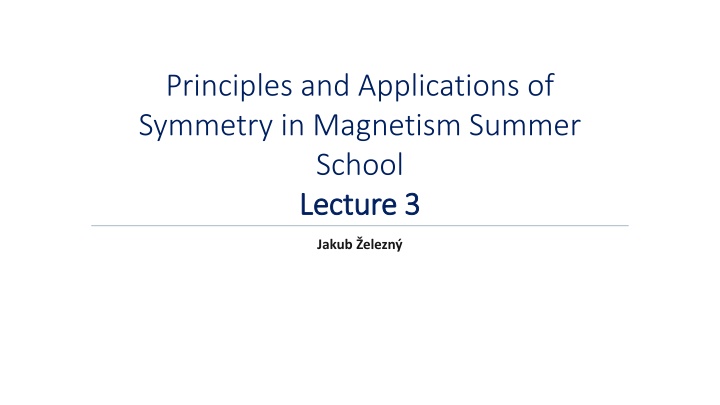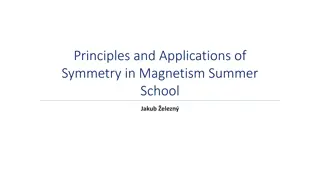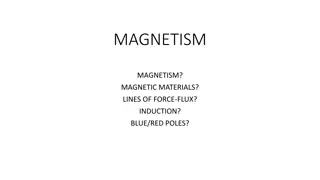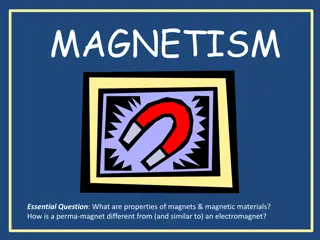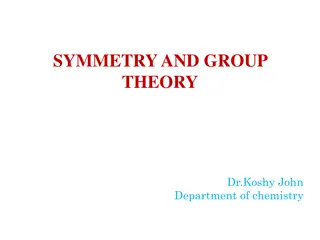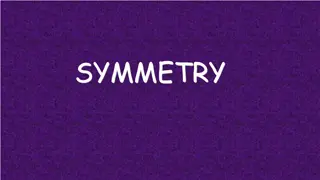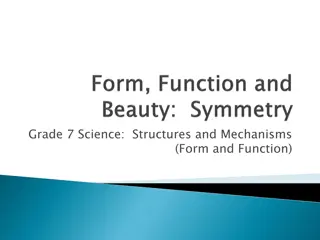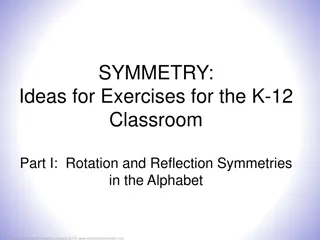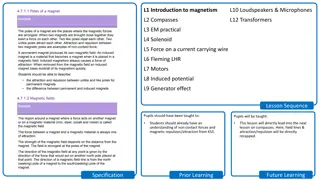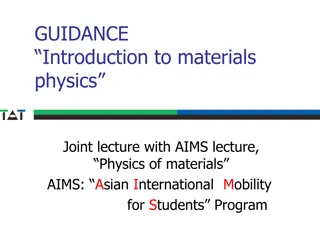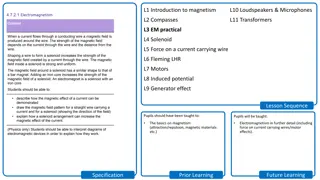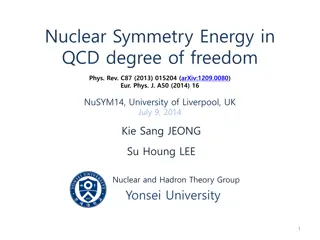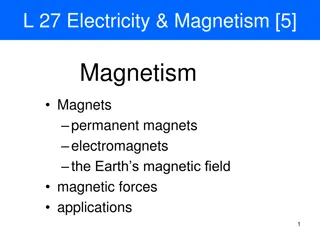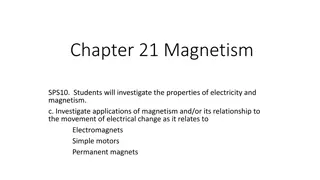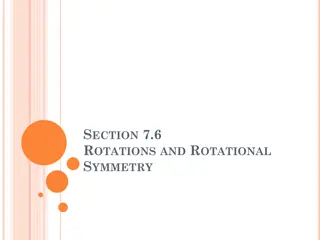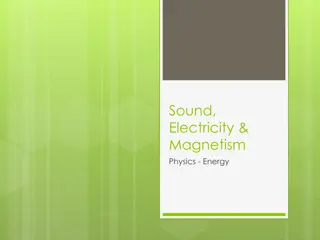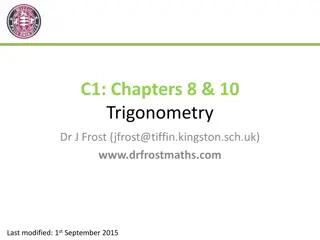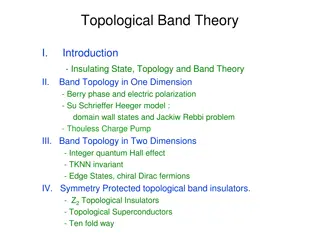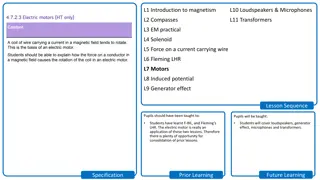Principles and Applications of Symmetry in Magnetism Summer School Lecture
This lecture delves into the principles and applications of symmetry in magnetism, covering topics such as the symmetry of response tensors, transformations of tensors, time-reversal symmetry, and beyond point groups. It explores the symmetry of local effects, equivalent magnetic configurations, expansions in magnetization, and magnetic interactions. Additionally, it discusses non-relativistic symmetry analysis, explaining how it works, determining non-relativistic symmetry operations, and the use of Sympetr for symmetry analysis. The lecture provides an insight into the usage of findsym for symmetry analysis and its input format. Practical examples and input files for MnTe are showcased, elucidating the importance of the cartesian coordinate system in defining bravais lattice vectors. Furthermore, the spin current in NiF2 with the same symmetry as RuO2 is highlighted through symmetry analysis using findsym.
Download Presentation

Please find below an Image/Link to download the presentation.
The content on the website is provided AS IS for your information and personal use only. It may not be sold, licensed, or shared on other websites without obtaining consent from the author.If you encounter any issues during the download, it is possible that the publisher has removed the file from their server.
You are allowed to download the files provided on this website for personal or commercial use, subject to the condition that they are used lawfully. All files are the property of their respective owners.
The content on the website is provided AS IS for your information and personal use only. It may not be sold, licensed, or shared on other websites without obtaining consent from the author.
E N D
Presentation Transcript
Principles and Applications of Symmetry in Magnetism Summer School Lecture 3 Lecture 3 Jakub elezn
Symmetry of response (and other) tensor Transformations of tensors Time-reversal symmetry Tensor symmetrization Beyond point groups Symmetry of local effects Equivalent magnetic configurations Expansions in magnetization Symmetry of magnetic interactions Non-relativistic symmetry analysis How it works? Determining the non-relativistic symmetry operations What it s used for? Symmetr a code for symmetry analysis
Repository: https://bitbucket.org/zeleznyj/linear-response-symmetry Some documentation available here Can be cloned using git clone git@bitbucket.org:zeleznyj/linear-response-symmetry.git Can be installed with pip: pip install symmetry uses Findsym internally to find symmetry group => findsym is linux only, so most features only work on linux On other OSs can be run through docker Can be run from terminal or used as python library
Uses findsym input format: described in symmetr/findsym/findsym.txt Name (unimportant) MnTe 0.01 1 1.0 0.0 0.0 -0.5 0.866025403784439 0.0 0.0 0.0 2.0 2 P 4 Mn Mn Te Te magnetic 0 0 0 1 3 0 0 0 0.5 -1 -3 0 0.333333 0.666667 0.75 0 0 0 0.666667 0.333333 0.25 0 0 0 Numerical precision Magnetic moments given in the basis of normalized Bravais lattice vectors Bravais lattice vectors Centering Number of atoms Atom types Atomic positions and magnetic moments
Example input files in folder tests MnTe symmetr res j E -f MnTe_inp1.in Specifies response mode Input file name observable perturbation Results given in a cartesian coordinate system
MnTe 0.01 1 1.0 0.0 0.0 -0.5 0.866025403784439 0.0 0.0 0.0 2.0 2 P 4 Mn Mn Te Te magnetic 0 0 0 1 3 0 0 0 0.5 -1 -3 0 0.333333 0.666667 0.75 0 0 0 0.666667 0.333333 0.25 0 0 0 The cartesian coordinate system is the one in which the bravais lattice vectors are defined b y a c x z
Spin current in NiF2 (same symmetry as RuO2) symmetr res s.v E -f findsym.in Spin current
Spin current in NiF2 without spin-orbit coupling symmetr res s.v E -f findsym.in --noso Symmetry without spin-orbit coupling
Edelstein effect in Mn2Au symmetr res s E -f findsym.in p 1 Projection on atom 1 symmetr res s E -f findsym.in p 1 p2 2 Projection on atom 1 and 2
Edelstein effect expansion in Mn2Au symmetr res s E -f findsym.in p 1 --exp 0 Expansion in L symmetr res s E -f findsym.in p 1 --exp 1 Expansion in L
Higher order response in Mn2Au symmetr res j E.E -f findsym.in
Magnetic interactions in Mn2Au symmetr mham --sites 1,2 f findsym.in Magnetic interactions mode sites
Also possible to specify group instead of structure symmetr res j E g Cmcm
Can also print out the symmetry operation => useful in the noso case symmetr res j E -f findsym.in --noso --print-syms
